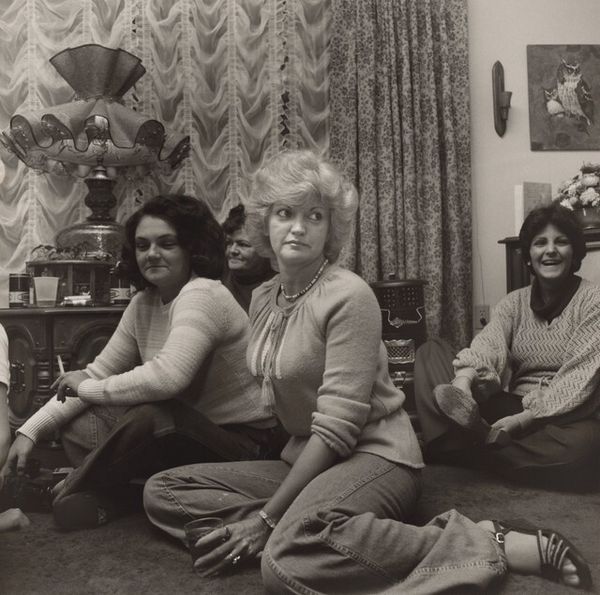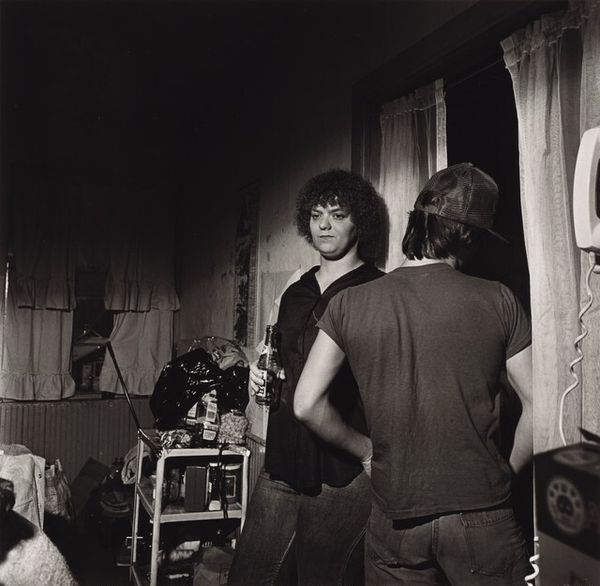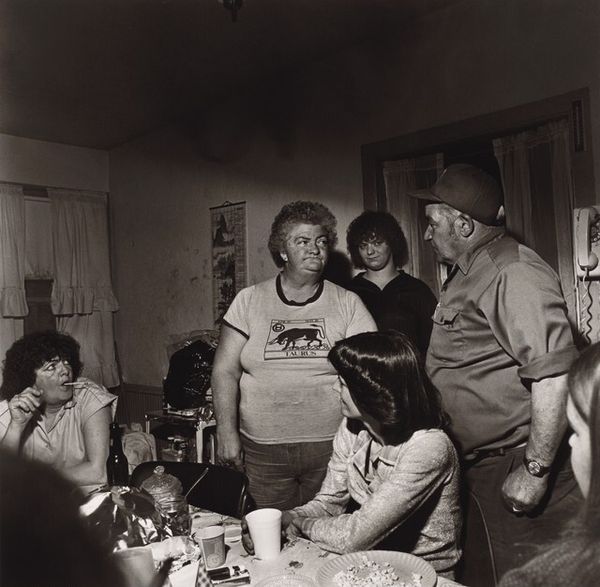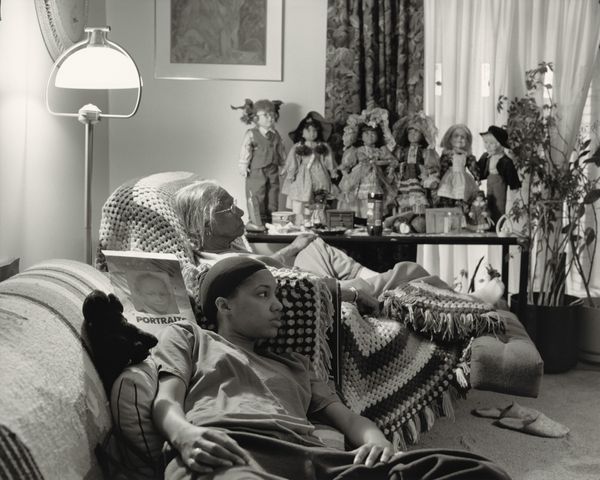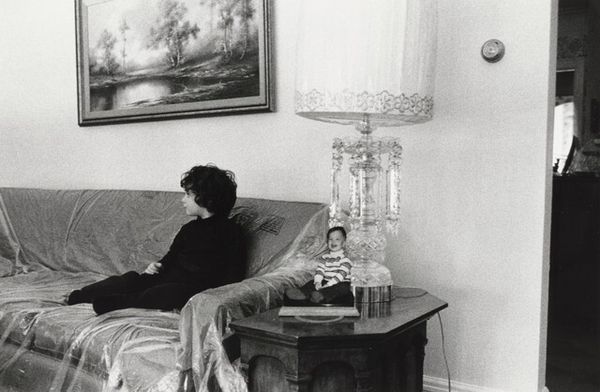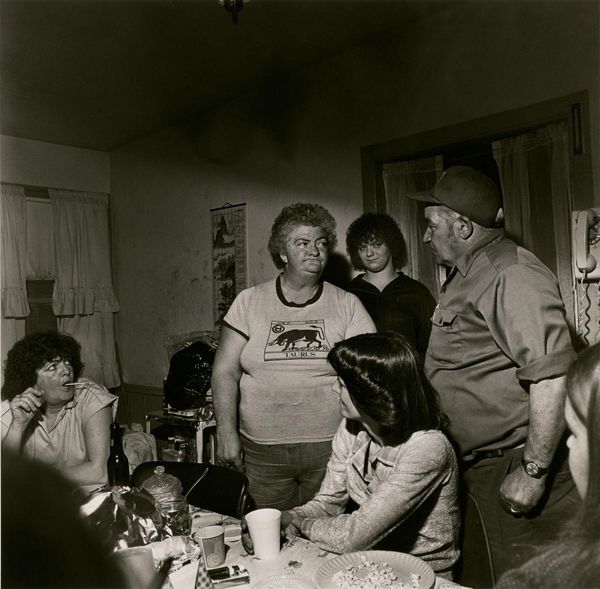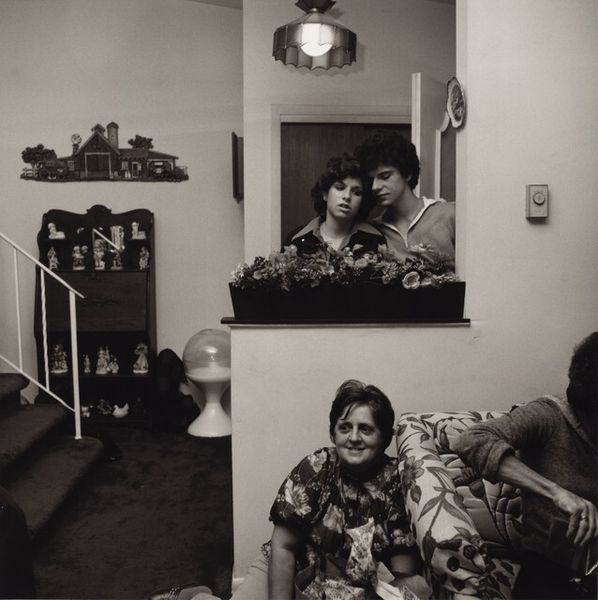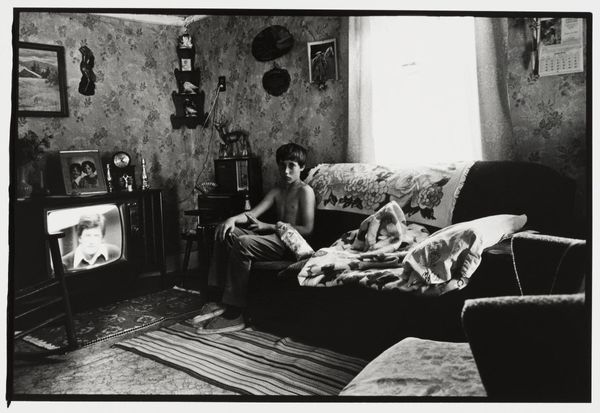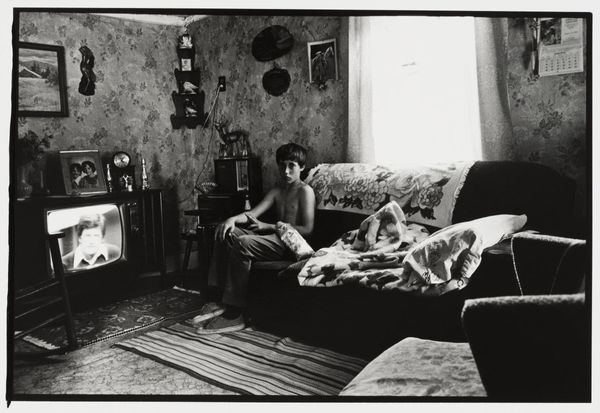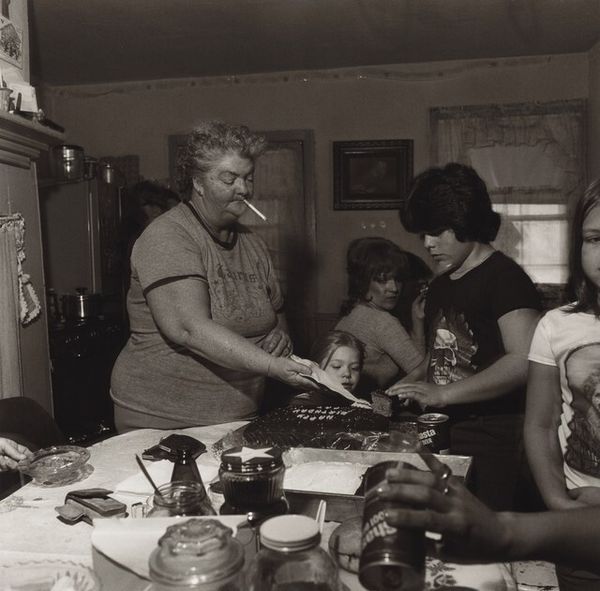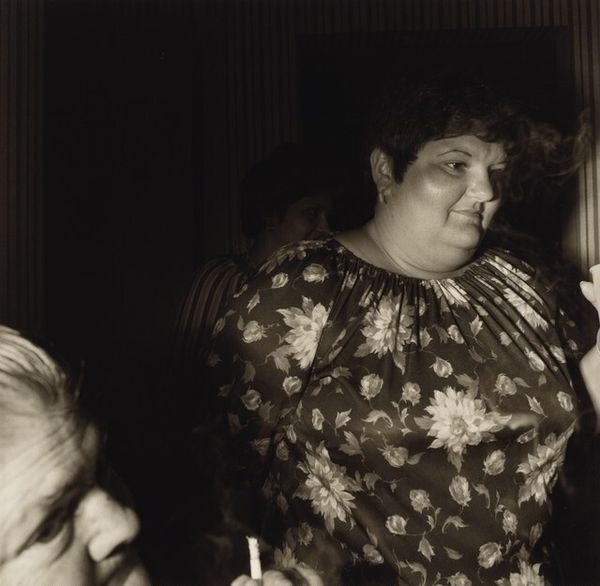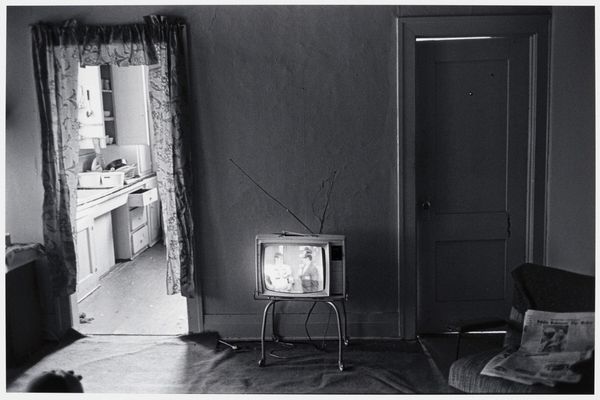
William Miller and Family, Twentieth-Anniversary Party, Martins Creek, Pennsylvania 1978
0:00
0:00
photography, gelatin-silver-print
#
portrait
#
photography
#
group-portraits
#
gelatin-silver-print
#
monochrome photography
#
genre-painting
#
realism
#
monochrome
Dimensions: image: 37 × 37.7 cm (14 9/16 × 14 13/16 in.) sheet: 50.4 × 40.4 cm (19 13/16 × 15 7/8 in.)
Copyright: National Gallery of Art: CC0 1.0
Editor: Here we have Larry Fink's photograph, "William Miller and Family, Twentieth-Anniversary Party, Martins Creek, Pennsylvania," taken in 1978. It's a black and white photograph – a gelatin-silver print, I believe – and it captures a seemingly intimate family gathering. I'm struck by the immediacy of the scene. What's your take on it? Curator: The most arresting thing about this image, for me, is its exploration of class through the very materiality of everyday life. Note the objects surrounding the subjects – the floral wallpaper, the television, the decorations. These are all commodities, manufactured and purchased. Consider what the image is trying to tell us. The work explores how these mass-produced things influence the experience of leisure and social relationships in Martins Creek, Pennsylvania, for the Miller family. Editor: So, you're suggesting Fink isn't just documenting a party, but the role of consumer goods in shaping identity? Curator: Precisely. How does the space itself, filled with material goods – each acquired through labor and exchange – affect our perception of this family’s milestone celebration? Editor: I see what you mean. The material aspects become as crucial to the narrative as the people themselves. They tell a silent story of their own. How might the fact that it is a photograph -- reproducible by its nature -- come into play? Curator: Think about it. Photography, especially gelatin-silver printmaking, makes visible moments in time and enables it to circulate. Fink turns the means of mass production, the camera, on to the social relations of production, raising a question about who and what is made visible and valued. This shifts our understanding of genre and expectations around 'family portraits' toward something critical. Editor: That gives me a lot to think about – seeing how the materials used and objects displayed reflect wider societal themes about class, labour, and what we consume. Curator: Indeed. By paying attention to those material choices, and how the image itself participates in a larger circulation, we can unlock a rich vein of understanding of Larry Fink’s process.
Comments
No comments
Be the first to comment and join the conversation on the ultimate creative platform.
